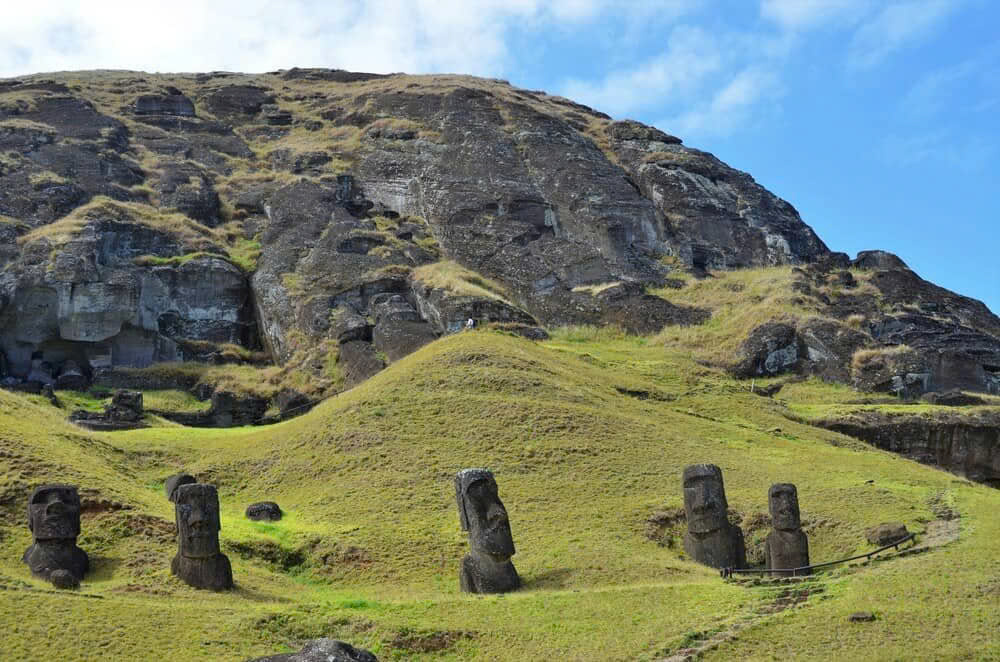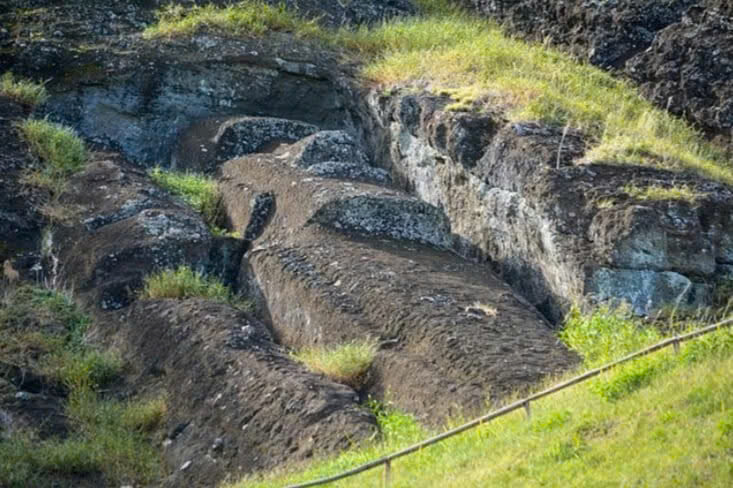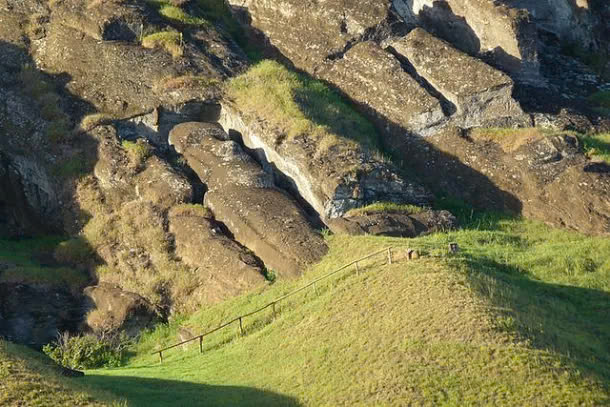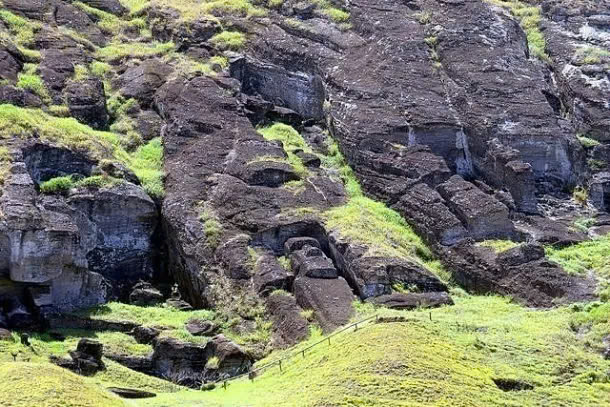In the heart of the Pacific Ocean lies Rapa Nui, known to most as Easter Island, home to one of humanity’s most impressive ancient achievements – the enigmatic Moai statues. Among these stone sentinels stands an unfinished behemoth that captures the imagination like no other: “El Gigante,” the sleeping giant of Easter Island.
The Sleeping Giant of Rano Raraku
Nestled within the volcanic slopes of Rano Raraku quarry lies an extraordinary testament to human ambition. El Gigante, measuring a staggering 22 meters (72 feet) in length, dwarfs its already impressive counterparts scattered across the island. Unlike its “brothers” who stand watch over the island’s perimeter, El Gigante never completed its journey. Forever bound to its birthplace, this colossal figure remains partially carved from the volcanic tuff that gave life to all Moai.

Had it been completed and erected, El Gigante would have towered over the landscape, becoming the undisputed monarch of Easter Island’s stone guardians. What caused the ancient sculptors to abandon such an ambitious project remains one of archaeology’s enduring mysteries.
Engineering Marvels of an Ancient Civilization
The Carving Process
The creation of Moai statues represents one of humanity’s most remarkable engineering feats. The sculptors of Rapa Nui worked with volcanic tuff, a relatively soft material that allowed for detailed carving but presented challenges for preservation. Using stone tools, they meticulously shaped these monoliths, transforming rough volcanic rock into imposing figures with distinctive features.
The Transportation Enigma
Perhaps even more impressive than the carving process was the method of transportation. How did the ancient Rapa Nui move these massive stone figures across miles of uneven terrain? Various theories have emerged over decades of research:
- The “walking” method, where teams used ropes to rock the statues from side to side, inching them forward
- The use of wooden log rollers to create primitive but effective conveyor systems
- Complex sledge arrangements that allowed for controlled movement across prepared pathways

In the case of El Gigante, its extraordinary size may have ultimately rendered transportation impossible with available technology, leaving it forever tethered to its quarry birthplace.
Cultural Significance and Purpose
Ancestral Connections
The Moai weren’t merely artistic expressions but served as powerful spiritual conduits between the living and ancestral worlds. Each statue is believed to represent a revered ancestor, chief, or significant figure in Rapa Nui society, their backs turned to the sea as they watched over their descendants.
Social Competition and Resource Depletion
Some scholars propose that Moai construction became entangled with competitive social dynamics between rival clans. This competition for prestige may have accelerated as statues grew increasingly larger, culminating in ambitious projects like El Gigante. This escalating competition might have contributed to the strain on the island’s finite resources, potentially hastening ecological collapse.
Video
The People Behind the Statues

The creators of the Moai were Polynesian seafarers who settled the remote island around the 12th century CE. Their society was structured around clans (“mata”) and led by a paramount chief (“ariki mau”). Despite their isolation, these master navigators maintained a complex social structure and developed unique cultural practices.
Intriguingly, some evidence suggests contact between Easter Islanders and South American peoples. DNA studies have indicated some degree of pre-European interaction between these populations, adding another layer to the already fascinating story of Rapa Nui.
El Gigante Today: A Window Into the Past
Today, El Gigante continues its silent vigil at Rano Raraku, an unfinished masterpiece that offers archaeologists and visitors a unique glimpse into the Moai creation process. Unlike completed statues that reveal only their final form, El Gigante shows various stages of carving, providing invaluable insights into ancient construction techniques.

As modern conservation efforts work to protect these cultural treasures from erosion and environmental threats, El Gigante stands as perhaps the most profound symbol of the island’s mysterious past—a testament to human ambition that reached beyond what was ultimately possible, yet remains an enduring marvel of ancient engineering and spiritual devotion.
Visitors who make the journey to this remote corner of the world can stand in the shadow of El Gigante and contemplate what might have been had this sleeping giant ever risen to take its place among the guardians of Rapa Nui.

